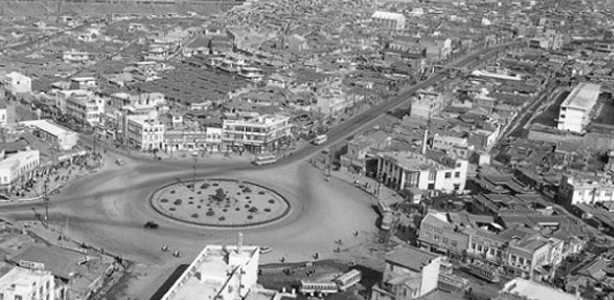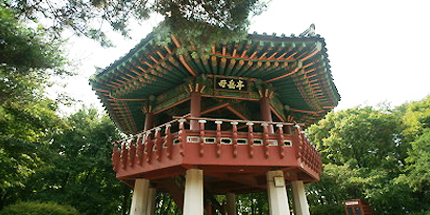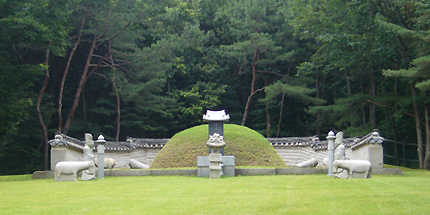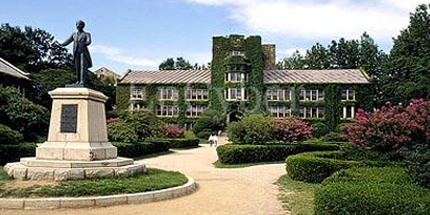
The Baekyangro stretches through Yonsei University, the road where Yonseians walked as they wrote history. Walking along this road you will find the Yonsei Health center, 100th Anniversary memorial hall, Soo Kyung Won, Luce chapel, College of Music, student union building, the Auditorium, School of Business, Outdoor Ampitheater and Cheongsong garden on the right.
And on the left you’ll find Yonsei Engineering Building, College of Engineering, Central Library, Gymnasium, Physical Education Hall, Yonsei Science Building, Science Hall, Baekyang Hall, Gwangbok Hall to reach the stairway donated by alumni in New York. Up these stairs you’ll be captivated by the beauty of the three traditional buildings of Yonsei Palace, Underwood Hall, Stimson Hall and Appenzeller Hall which are all historical landmarks of Korea.
In the center of the garden encompassed by these three buildings you’ll find the statue of Dr. Underwood, who set grounds to found Yonsei University. To the left on the hill behind Stimson Hall are Hankyung Hall and Pinson Hall, with the School of Theology facing east.
Walking towards Underwood Hall stands Yonhi Hall, Seongam Hall to the right and the YuEokGyum Memorial Hall on the left with DaeWoo Hall behind it. Billingsley Hall is situated in the rear right of YuEokGyum Memorial Hall, and on the hill stands the Graduate School of Education, Oesol Hall and Widang Hall. Walking along the road behind Seongam Hall towards East Gate will take you to New Millenium Hall, SK Global House, Interational House, and the Korean Language Institute. Following the route towards North Gate will take you to the five Muak dormitory buildings.
Geographical Background

The school site of Yonsei University is exactly the great place of Mu-ak and the hall of learning, which builds a beacon of freedom,raisesatorch of immortal and leads the way to the peoplecorrectly.
Yonsei University is located in Sinchon, about 6km off west of central Seoul. Walking towards the Mu-Ak Mountain from Sinchon Rotary will bring you to the gateway of Yonsei University, Baekyang Ro. On the right there is Sookyung Won, the tomb of the royal concubine Lee and the green hill that spans wide facing Gwan-ak the propitous site of Mu-ak, the school site of Yonsei, once the site of Yonhi Palace.
Historical Background
-
 Mu-ak(毋岳)
Mu-ak(毋岳)
King Taejo himself visited the Mu-ak area in his third year, after the proposal of designating Mu-ak as the national capital. He revisted the site again two years later, but the plan was fell through. However, King Sejong constructed the area as Yonhi Palace in his second year to remember his father King Taejong.
-
 Yonhi Palace(衍禧宮)
Yonhi Palace(衍禧宮)
The site of Yonhi palace, the school site of present-day Yonsei University served as the residential site for King Taejong who was revered as King Taesang. The place was later named Yonhi Palace after the death of King Taejong. Records show that Yonhi palace was sustained until the realm of King Yeonsan.
-
 Soo Kyung Won(綬慶園)
Soo Kyung Won(綬慶園)
SookyungWon is located near the entrance of Yonsei University, the area that holds the grave of Yeong Bin, the royal concubine of YeongJo and the mother of the crown Prince JangJo (Sado Seja) who died under false accusations in a wooden rice chest.
-
 Dae Ya Pyeong(大野坪)
Dae Ya Pyeong(大野坪)
The Yonsei Campus is referred to as Dae Ya Pyeong, as records in history confirm that the grave of the Royal Concubine Yeong Bin will be placed in Dae Ya Dong of the Yonhi Palace.
